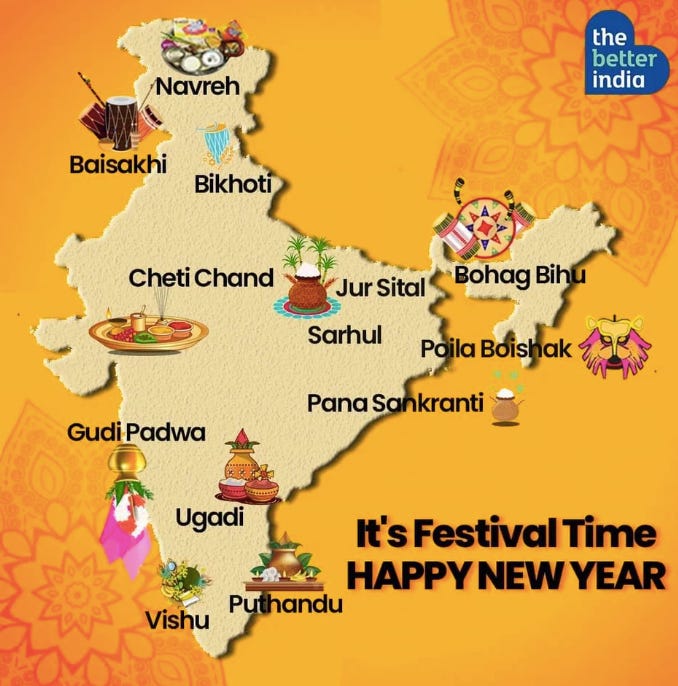The Significance of the Indian New Year
The second day of April is celebrated as Indian New Year. Navratri (Nine Auspicious Nights) also starts on this date. Let us appreciate the significance of this sacred date:
As per Brahma Puran, this is the day when Lord Brahma had started creating the Earth and its inhabitants. This was the day when Sun God rose in the East for the first time. Navaratri starts on the Full Moon Pratipada (one day after the full Moon). This is the day when the worship of Mother Goddess riding a tiger starts. It ends after nine days on the day of Ram Navami when Lord Ram was born.
Why we worship Mother Godess for nine days in Navratri? Hindus believe the digit Nine is a sacred number. We encounter Nine in many important junctures of life. The examples are:
The number signifies longevity and eternity.
As per Sanatan Dharma there are nine planets (nav graha), nine jewels (nav ratna to appease the planets), Nine forms of Durga (Nav Durga), nine emotions (nav ras) and nine main organs in our body .
In mathematics 9 is the biggest number.
When we add up 360 degrees, it adds up to nine.
If we add the trems of Satya, Dwapar, Treta Yugs, it works out to nine.
The gestation period of a human child is nine months.
Nine means completion, because after nine the count starts with one, symbolizing a new beginning.
As per the Hindu calendar (Vikrami Sambat), the year 2079 starts today. It is 57 years ahead of English calendar, i.e. 2022 + 57 = 2079.
A Hindu calendar year consists of 354 days; whereas the English Calendar consists of 365 days. Hindu months are divided into two parts following the phases of the Moon. Iit counts the waxing and waning cycle of the Moon for a month. A month starts on the first day of the waxing Moon. It ends with the fortnight of waning Moon. The advantage of this system is that one can get the month's date by looking at the Moon.
On the first day of the year, Hindus worship a Kalash (a brass or earthen pot) full of water and decorated with mango leaves and a coconut. The pot is marked with the sacred symbol of Swastika using the red vermillion. It symbolises the presence of all Gods, Goddesses, oceans and lands, holy rivers, and everything else that brings peace and prosperity. Mango leaves are chosen for decoration because only Mango leaves have the unique quality emitting oxygen till those dry up.
May God bless everyone who reads the above text and understands its significance.



